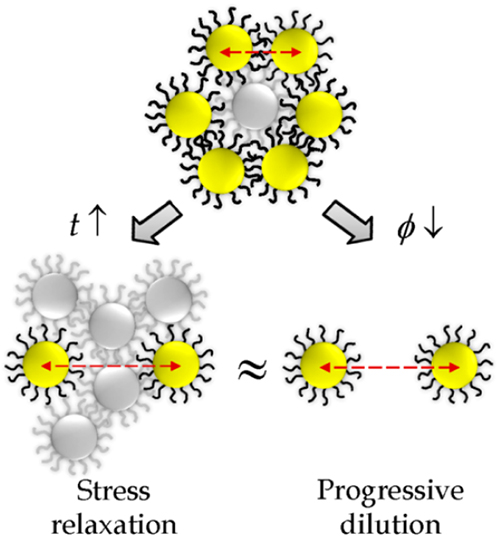X-RAY RUNS: Apply for Beamtime
2017 Nov 1 - Dec 21
2018 Feb 7 - Apr 3
2018 Proposal/BTR deadline: 12/1/17
2018 Apr 11 - Jun 4
2018 Proposal/BTR deadline: 2/1/18
In a recent ACS MacroLetters article Yu Ho Wen, Jennifer Schaefer, and Lynden Archer from the Cornell School of Chemical and Biomolecular Engineering report on a systematic study using small-angle x-ray scattering at CHESS to map the structural relaxation for colloidal glasses. The paper “Dynamics and Rheology of Soft Colloidal Glasses” came out in the January 7th edition [1].
The authors recount how complex can be the physics and rheology of a concentrated suspension of particles in an unentangled polymeric fluid; this study is designed to provide a way to gain insight into molecular glass-forming liquids and the physics of molecular glasses. Thermal forces alone are sufficient to allow the particles to explore all of its configuration space on a time scale primarily set by the bulk viscosity of the polymer host. They emphasize that this situation prevails even though each individual particle in the suspension must continuously escape temporary entrapments in “short-lived cages” defined by the close proximity of their neighbors. Increasing the particle concentration can drive the system into a “jammed state” in which the particles are disordered on long length scales, and because the cages are long-lived, the particle equilibrium times and overall suspension viscosities diverge.
Getting a handle on long time constant phenomena, in this case the terminal relaxation of soft glassy materials, can be quite difficult because in many cases the time required to observe complete cage escape can be of geological time scales.
An experimental handle can be had by softening the particles by tethering polymer chains to their surfaces to effectively lower the particle volume fraction and facilitate short-range adjustments or “in-cage motions”. Small-angle x-ray scattering (SAXS) was used to characterize polyethylene glycol (PEG) oligomers coating 10±2 nanometer-sized silica nanoparticles. Altering concentrations changed the amount by which the PEG ligands were confined and compressed, evident by systematically increasing the mean interparticle distances – discernible by SAXS. Interpenetrating ligands imposed long-lived constraints on the cores, leading to jamming. SAXS data could be distilled to understand density fluctuations and short-range relaxation of the hard cores. They conclude that time-concentration superposition (TCS) principle could be used to create a continuous map of the dynamic response of colloidal glasses on time scales even greater than 108 seconds, far inaccessible to real-time experiments, and hence provides a very powerful means to probing extremely slow particle dynamics for soft glassy materials.

Schematic diagram of PEG ligands attached to silica nanoparticles under conditions of raising temperature (left) or reducing concentration (right).
Reference:
[1] Wen YH, Schaefer JL, Archer LA, "Dynamics and Rheology of Soft Colloidal Glasses", American Chemical Society 4 119-123 (2015).
Submitted by: Ernest Fontes, CHESS, Cornell University
05/13/2015
